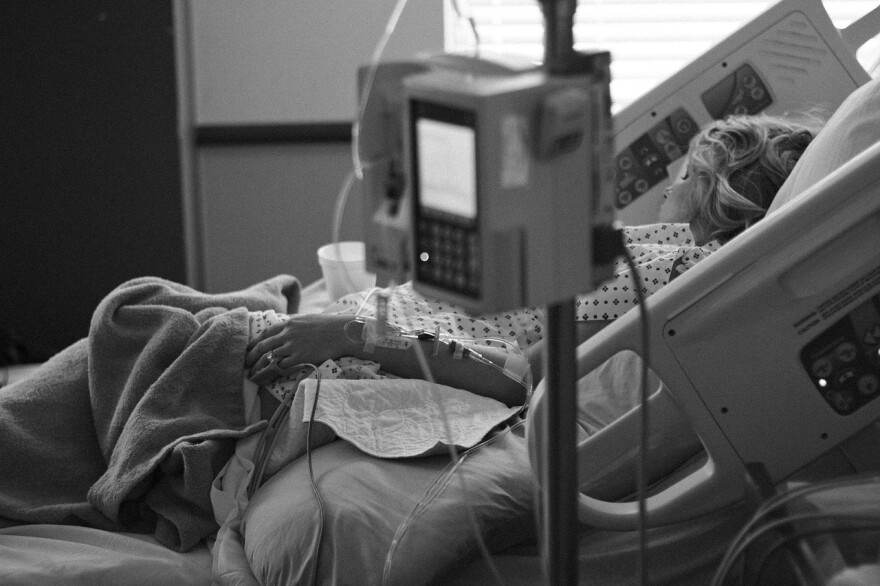Alabama is showing new signs that COVID-19 is still with us. A recent report from the Centers for Disease Control and Prevention says test areas in Jefferson County are either high or very high. Levels are low nationally but certain states in the U.S. are part of a recent surge for the virus that causes the disease and Alabama is a part of those states. APR took a look at the testing process and why healthcare providers say why we should take it seriously. When Alabama health officials go searching for signs of COVID-19, one place they look is wastewater. Investigators with the state’s Department of Public Health visit water treatment plants to test for traces of the coronavirus.
“I mean, obviously regular testing, you're swabbing each patient, so that's more time consuming, whereas, if you're swabbing, you know, the water systems,” said Dr. Prerana Rodrigues. That’s Prerana Rodrigues and she is with the Health Foundation of the University of Alabama in Birmingham.

“Especially like the sewage areas and the pipes, that also gives us a rough estimate of at least the numbers you know, as a whole, generally. But it obviously doesn't tell us. Well, if it's concentrated within number one a certain area, right?” said Dr. Rodrigues.
She says testing wastewater can give health officials a general idea of how COVID is spreading in a certain community. “You're just wanting to know the general numbers, you know, versus, okay, the levels of covid versus, say, hospitalization rates, or what have you, then maybe the, you know, testing the water works wouldn't be a bad idea.” Dr. Rodrigues stated.
“Typically, we see a surge in between the months, when you're thinking of Memorial Day to Labor Day, we see a surge of cases,” said Amanda Ingram. Amanda Ingram is with the Alabama Department of Public Health.
She says that time frame means COVID is at its height right now, but the caseload should ease up. Currently, COVID cases have stayed steady since Labor Day.
“And it's, it can be varying, varying degrees of surges, but it's something that we typically see, and so we're in that uptick right now, and it'll probably go back down around Labor Day.” said Amanda Ingram.
Healthcare providers say Covid can surge at any point of the year. And ADPH says the levels of Covid in our wastewater are increasing. Dr Rodrigues at UAB says that could make things busy for local hospitals.
“So, I mean, it could, like, potentially indicate, again, you know, that could potentially translate into a higher number of cases seen into the hospitals, into the clinics. Now, do we actually see that? For me personally, not too many. But then again, it also depends on your patient population.” Dr. Rodrigues stated.

It’s been about five years since the COVID-19 pandemic hit. The virus pushed restaurants out of business and prompted millions of school kids to attend class virtually. Amanda Ingram with the Alabama Department of Public Health says get used to it.
“It's becoming another one of your respiratory conditions. And so it's very hard to tell between whether or not it's the flu, just the common cold, or whether or not it's allergies. I do really think that people aren't able to distinguish between those, and they continue going on as if life is back to normal.” said Ingram.
The days of mass testing with cars lined in parking garages with passengers waiting to get their noses swabbed appear to be over. Doctor Prerana Rodrigues at UAB says that could impact the process of getting a specific picture of how COVID is spreading.
“So when surges occur and patients don't come in, yeah, obviously it's a little harder to get you know sort of exact numbers. Now, unless everyone gets tested, you won't know the exact number. So it would be a good estimate, but it doesn't tell it doesn't give us the whole picture, per se.” said Dr. Rodrigues.
Amanda Ingram with ADPH says not of the things that determine whether patients get tested or even see their doctor if they get sick. “Usually, there are very personal reasons, and so as you think, there's a lot of political backing in certain degrees, but I mean, we can't make someone come in to get tested or make someone get vaccinated, but we can just encourage the appropriate behaviors if you do become sick.” Amanda Ingram stated.
Covid can sometimes be tricky to identify but taking the necessary precautions is the best way to stay clear of any infections.

“Just a simple mask, you know, is the first step, hand washing is so so important.” Dr. Rodrigues suggested.
Public health officials add that even though signs of COVID show up in wastewater, that doesn’t mean that the water supply is at risk. Doctor Rodrigues says it’s always good to keep up with the steps of staying clear of Covid and any other respiratory infections.
“In order for us to see hospitalizations, it would have to be a strain that not only spreads quite quickly, but also is causing a lot of symptoms, significant enough where people will, you know, get it evaluated.” said Dr. Rodrigues.
We gave Dr. Ingram at ADPH the last word on how this year may go, COVID-wise.
“In April of 2024, covid 19 was no longer reportable in the state of Alabama, except in congregate living settings, and so that includes long term care facilities and correctional facilities, and also healthcare personnel who work in facilities like that that are part of an outbreak, and so we aren't able to see how many cases of covid that we have, as we did during the pandemic. So we are left with what we have. And so wastewater surveillance is one way that we can easily pick up on whether or not we're starting to see increases super it's a great way to see the surge without being any without being invasive at all.” Amanda Ingram stated.


